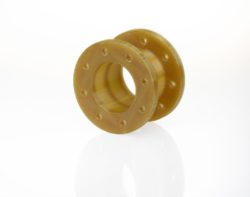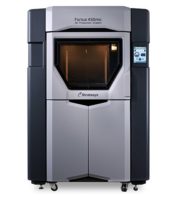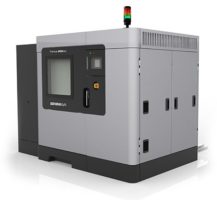A PEKK-based FDM 3D Printing Material with High Chemical and Heat Resistance
Stratasys Antero 800NA is a PEKK-based (polyetherketoneketone) thermoplastic 3D printing material that combines both FDM design freedom and ease of use. This material holds outstanding mechanical properties, along with low outgassing characteristics of PEKK material making it ideal for use in aircraft, space and manufacturing applications.
Overview
Antero™ 800NA is a PEKK-based (polyetherketoneketone) FDM thermoplastic. With high-performance material which is highly chemical resistant, Antero 800NA holds extremely low outgassing properties and exhibits high heat resistance, making it fit perfectly for aircraft and aerospace applications.
Combining PEKK-based thermoplastic and FDM design freedom gives users the ease of use, with excellent mechanical properties and low outgassing characteristics of PEKK material.
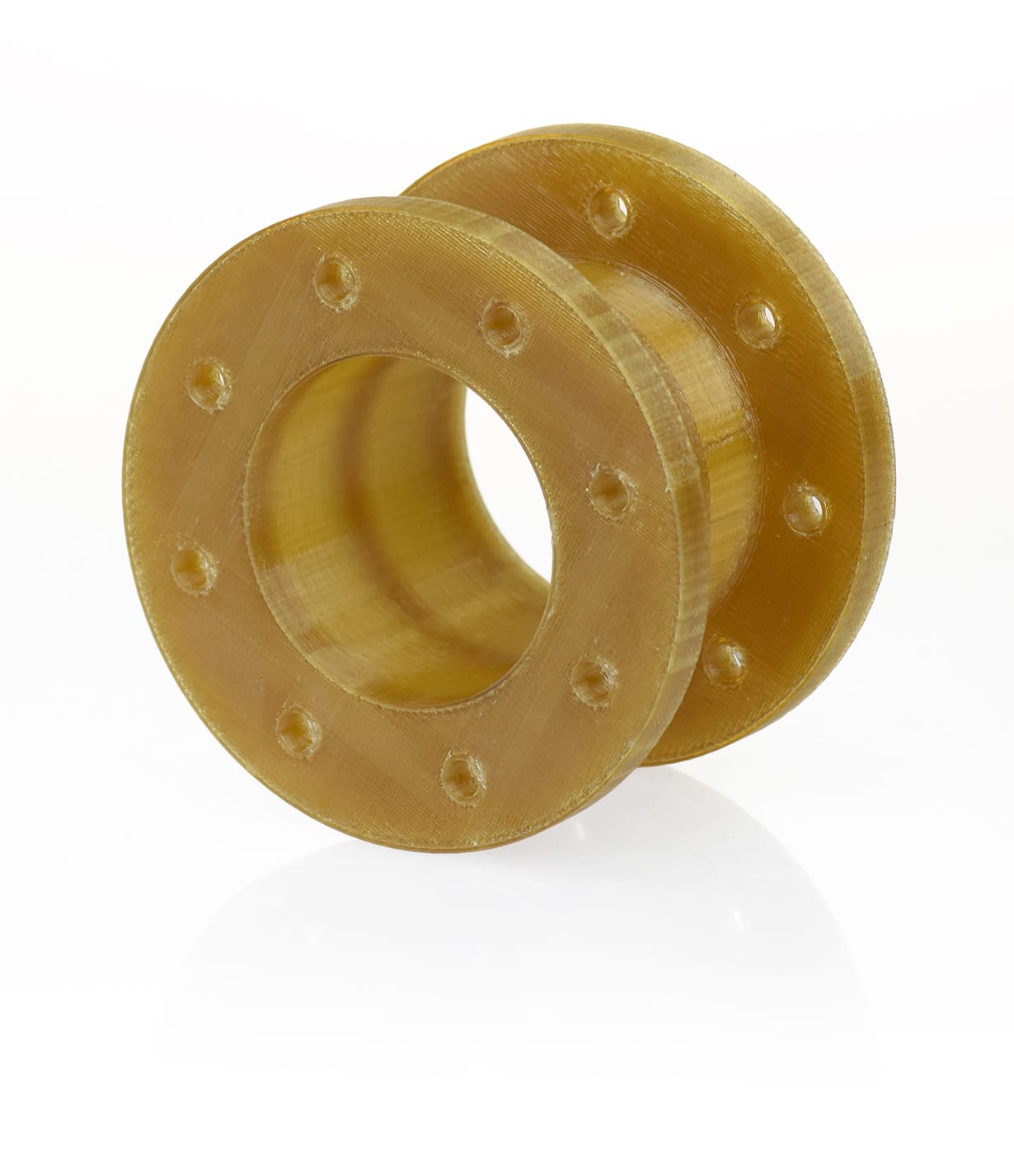
Material Performance
FDM Antero™ 800NA gives new opportunities for chemical resistant 3D printed parts. A majority of thermoplastics tend to fail when they come in contact with fuel, hydraulic fluids, or other chemicals. However, FDM Antero™ 800NA, a PEKK proprietary blend, solves these challenges with excellent mechanical properties and the highest chemical resistance available.

TENSILE STRENGTH, YIELD
93 MPa (XZ Axis) 46
MPa (ZX Axis)

TENSILE MODULUS
3095 MPa (XZ Axis)
34,834 MPa (ZX Axis)

HDT @66 PSI
150 °C
![]()
NOTCHED IMPACT
37 J/m (XZ Axis) 27
J/m (ZX Acis)
Material Highlights
Characteristics
- Ideal for customized parts required at low volumes, making the material perfect for quick delivery of parts to market
- Strong with excellent temperature, wear and chemical resistance
- Highest chemical resistance available with FDM technology
- 3D Printing with PEKK blend offers new design freedom than standard PEKK that would be CNC machined
- Produce extremely accurate parts in large sizes
Advantages
- Excellent mechanical properties
- Design freedom
- Chemical resistance
- Low outgassing properties
- Heat resistance
- Less waste than CNC
- Cost advantages over PEKK
Uses
- Ducting
- Housings
- Clips/brackets
- Electrical Conductors
- Radomes
- Aircraft components
- Components exposed to fuel, oil, and fluids
- Spacecraft parts that require low outgassing
- Chemical resistant industrial parts
Industries
- Aerospace
- Space
- Industrial manufacturing
- Oil and gas
- Motor sports
Performance Scale
![]()
![]()
![]()
![]()
![]()
Material Colours

Powered By FDM
Build durable and high-quality parts with FDM. Consisting of production-grade thermoplastics, parts 3D printed with FDM are affordable, mechanically strong and stable over time.
Technical Specifications
Material Properties
| Fortus 450mc | Test Method | XZ Orientation | ZX Orientaton |
| Tension Strength, Yield (Type 1, 0.125 in., 0.2 in./min) | ASTM D638 | 93.1 ± 0.4 MPa (13,504 ± 57 psi) |
45.9 ± 5.3 MPa (6,650 ± 765 psi) |
| Tensile Strength, Ultimate (type 1, 0.125 in., 0.2 in./min) | ASTM D638 | 93.1 ± 0.4 MPa (13,504 ± 57 psi) |
45.9 ± 5.3 MPa (6,650 ± 765 psi) |
| Tensile Modulus (Type 1, 0.125 in., 0.2 in./min) | ASTM D638 | 3.1 ± 0.3 GPa (448.9 ± 39.5 ksi) |
3.5 ± 0.7 GPa (505.3 ± 108.2 ksi) |
| Elongation at Break (Type 1, 0.125 in., 0.2 in./min) | ASTM D638 | 6.40 ± 1.05%1 | 1.22 ± 0.28%1 |
| Elongation at Yield (Type 1, 0.125 in., 0.2 in./min) | ASTM D638 | 4.31 ± 0.58% | 1.11 ± 0.53%2 |
| Flexural Strength (Method 1, 0.05 in./min) | ASTM D790 | 142 ± 3 MPa (20,548 ± 477 psi) |
64 ± 10 MPa (9,349 ± 1,514 psi) |
| Flexural Modulus (Method 1, 0.05 in./min) | ASTM D790 | 3.1 ± 0.1 GPa (445.6 ± 10.8 ksi) |
2.7 ± 0.1 GPa (388.7 ± 13.0 ksi) |
| Flexural Strain at Break (Method 1, 0.05 in./min) | ASTM D790 | No break | 2.41 ± 0.39%3 |
| Notched Impact (Method A, 23 °C) | ASTM D256 | 37 ± 6 J/m (0.69 ± 0.12 ft-lb/in) |
27 ± 5 J/m (0.51 ± 0.09 ft-lb/in) |
| Unnotched Impact (Method A, 23°C) | ASTM D256 | 1,826 ± 1,254 J/m (34.2 ± 23.5 ft-lb/in) |
75 ± 28 J/m (1.40 ± 0.52 ft-lb/in) |
| Compressive Strength, Yield (Method 1, 0.05 in./min) | ASTM D695 | 100 ± 2 MPa (14,572 ± 317 psi) |
) 101 ± 3 MPa (14,595 ± 439 psi) |
| Compressive Strength, Ultimate (Method 1, 0.05 in./min) | ASTM D695 | 100 ± 2 MPa (14,572 ± 317 psi) |
101 ± 3 MPa (14,595 ± 439 psi) |
| Compressive Modulus (Method 1, 0.05 in./min) | ASTM D695 | 2.45 ± 0.01 GPa (355.6 ± 1.6 ksi) |
2.3 ± 0.1 GPa (336.3 ± 12.1 ksi) |
| Stratasys F900 | Test Method | XZ Orientation | ZX Orientation |
| Tensile Strength, Yield (Type 1, 0.125 in., 0.2 in./min | ASTM D638 | 90.6 ± 3.0 MPa (13,138 ± 438 psi) |
57.0 ± 5.0 MPa (8,265 ± 718 psi) |
| Tensile Strength, Ultimate (Type 1, 0.125 in., 0.2 in./min) | ASTM D638 | 90.6 ± 3.0 MP (13,138 ± 438 psi) |
57.0 ± 5.0 MPa (8,265 ± 718 psi) |
| Tensile Modulus (Type 1, 0.125 in.m 0.2 in..min) | ASTM D638 | 2.92 ± 0.10 GPa (423.8 ± 15.1 ksi) |
2.86 ± 0.18 GPa (415.4 ± 26.3 ksi) |
| Elongation at Break (Type 1, 0.125 in., 0.2 in./min) | ASTM D638 | 6.08 ± 1.31%1 | 1.87 ± 0.30% |
| Elongation at Yield (Type 1, 0.125 in., 0.2 in./min) | ASTM D638 | 4.26 ± 0.32% | 1.78 ± 0.45%2 |
| Flexural Strength (Method 1, 0.05 in./min) | ASTM D790 | 140.0 ± 3.9 MPa (25,299 ± 569 psi) |
87.9 ± 14.4 MPa (12,743 ± 2,083 psi) |
| Flexural Modulus (Method 1, 0.05 in./min) | ASTM D790 | 3.07 ± 0.06 GPa (445.2 ± 9.1 ksi) |
2.73 ± 0.08 GPa (395.8 ± 12.2 ksi) |
| Flexural Strain at Break (Method 1, 0.05 in./min) | ASTM D790 | 4.55 ± 0.37%3 | 3.3 ± 1.90%4 |
| Notched Impact (Method A, 23 °C) | ASTM D256 | 44 ± 4 J/m (0.83 ± 0.07 ft-lb/in) |
33 ± 9 J/m (0.61 ± 0.16 ft-lb/in) |
| Unnotched Impact (Method A, 23 °C) | ASTM D256 | 1,553 ± 464 J/m (29.1 ± 8.7 ft-lb/in) |
153 ± 40 J/m (2.86 ± 0.74 ft-lb/in) |
| Compressive Strength, Yield (Method 1, 0.05 in./min) | ASTM D695 | 97.5 ± 3.1 MPa (14,135 ± 445 psi) |
93.5 ± 2.9 MPa (13,559 ± 417 psi) |
| Comrpessive Strength, Ultimate (Method 1, 0.05 in./min) | ASTM D695 | 97.5 ± 3.1 MPa (14,135 ± 445 psi) |
93.5 ± 2.9 MPa (13,559 ± 417 psi) |
| Compressive Modulus (Method 1, 0.05 in./min) | ASTM D695 | 2.36 ± 0.05 GPa (341.5 ± 7.5 ksi) |
2.18 ± 0.06 GPa (316.7 ± 9.2 ksi) |
Applications
Fortus 450mc™ and the Stratasys F900™
Antero 800NA is available for both 3D printers. They are also compatible with SUP8000B breakaway support material.
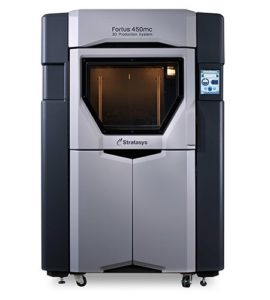
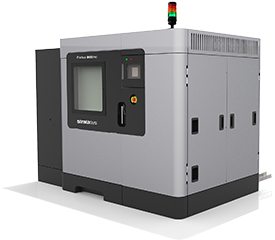
Get Started with High-Performance PEKK Based Materials.
Learn more about Antero™ 800NA today.
